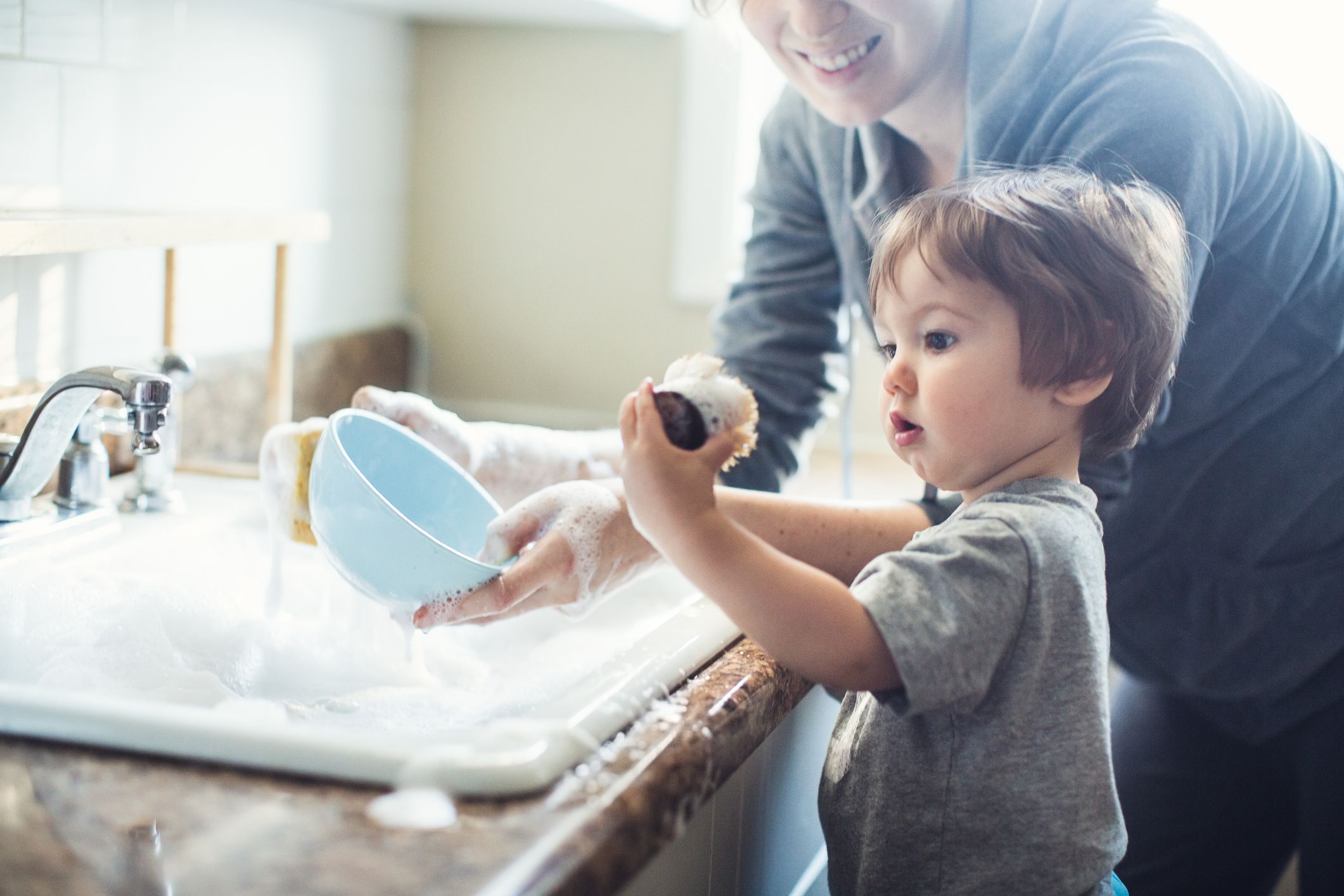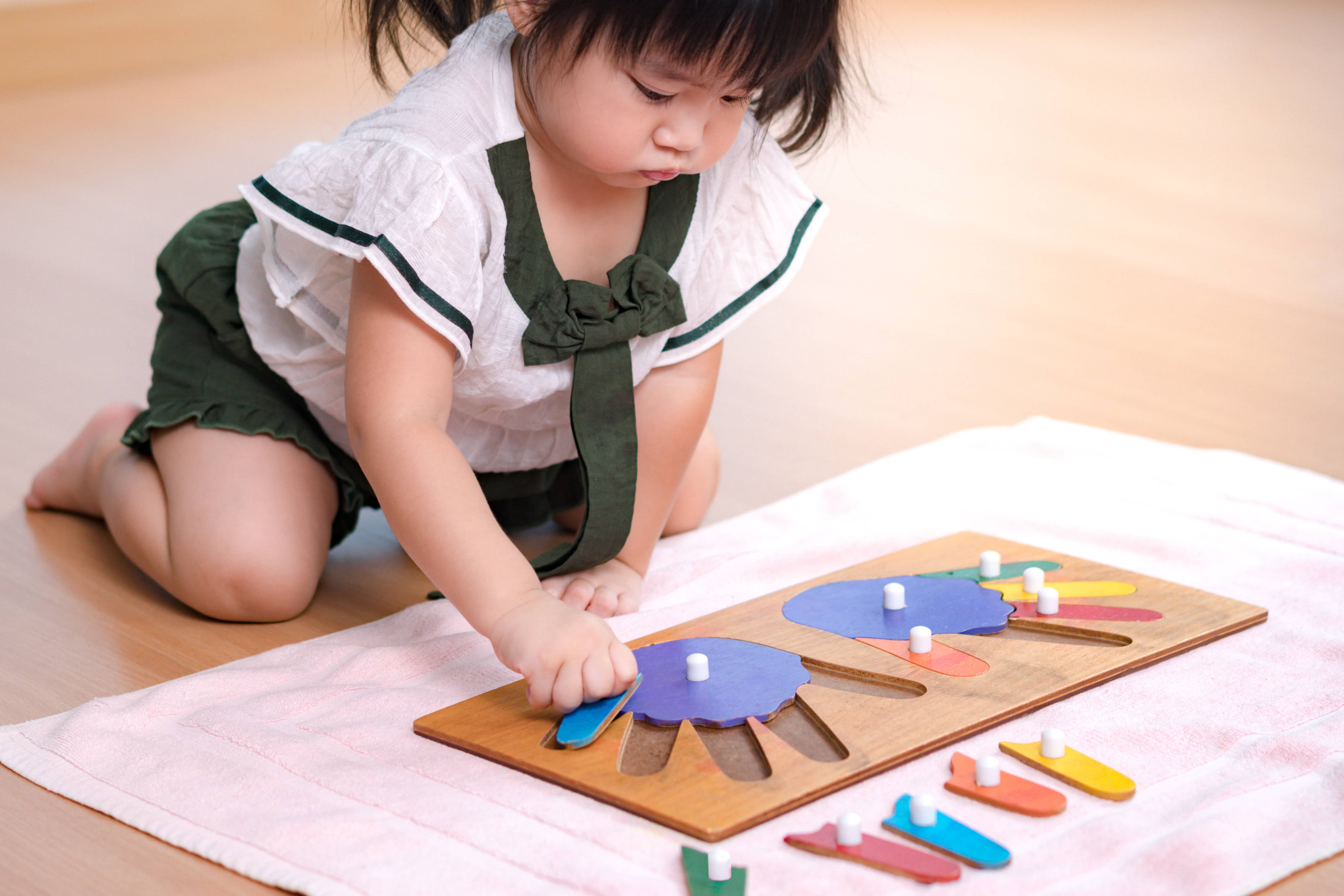If you're a parent who has a child or multiple children attending a Montessori school, you may be searching for understanding about how to bridge the gap between school and home. By making small adjustments at home, you can create remarkable results and dramatically enhance the continuity for children from home to school or school to home.
Goodbye, power struggles!
Estimated reading time: 4 minutes

Why It's Vital to Provide Montessori Learning at Home
If you answered yes to these questions, you’re not alone! Parents everywhere are perplexed by these dilemmas. You can have that same normalized behavior as Montessori referred to it. What's the key? Consistency.
As parents, our lives are very full. Our attention is often divided and we are being pulled in many directions. Therefore, being consistent with our children can be challenging. However, there are a few things you can do to dramatically improve your environment at home to be child-friendly AND create more support and ease for you as a parent.
Maria Montessori was a master of observation. She understood that behavior normalizes when the environment meets the developmental needs of children. She knew how to pay attention to small signals of communication from children. And you can, too!
When children have a rich and child-friendly environment they are directed to a natural unfoldment of learning and fulfilling their own needs. Sibling rivalry often happens without this structure to support them.
Related reading: "What You Need to Know to Raise an Emotionally Intelligent Child."
When you know how to engage children naturally through simple actions, life as a parent becomes much easier. When you have all the pieces to the puzzle, it’s not as perplexing as it can feel in the midst of busy lives.
How to Apply Montessori in the Home
If you're looking to implement a more Montessori-like environment at home or if you're seeking to apply some of the principles of Montessori in your homeschooling,
Both my husband and I went through Montessori Teacher Training when I was pregnant with my first child. It was an incredible opportunity for getting in touch with the Montessori Method. So when my children were very young, I homeschooled them with that knowledge top of mind. However, we were young parents and didn't have extra money to spend on official Montessori lessons so I made most of the lessons from scratch.
Make a special area in the home for lessons. And ensure that the environment is simple, clean, and appealing. Arrange the room so that everything is within the child’s reach and sized proportionately to their body size and strength.
If there are certain things that you don’t want the child to touch, put them out of reach and out of sight.

The Absorbent Mind and Keys to Making Everything Work Together
Make the environment beautiful.
Montessori talks about the voice of things and how the environment speaks to a child.
Create an environment that nourishes the eyes and calls to the child: "Come and interact with me!" Simple things like artwork at their level or sculptures that the child can gaze upon and touch or a basket full of exquisite fabrics with different colors and textures.
The young child takes in the world through the absorbent mind, literally taking into his or her body and mind the sensations, impressions, and feelings it receives from the surrounding environment.
You don't have to spend thousands of dollars outfitting a Montessori classroom. As Montessori said, “Education is a natural process carried out by the child and is not acquired by listening to words, but by experiences in the environment.” Create an experience for the child.
Nurture a child's natural love of order.
One of the most important things to remember is to make the environment supportive of your children's developmental stages. And one of the many beautiful principles that Maria Montessori taught was the child's love of order. Yet, they also enjoy being independent at their skill level.
Simple changes can make all the difference:
- Transform a toybox full of myriad toys into a well-designed shelf with carefully arranged toys and lessons laid out purposefully.
- Provide small chairs and a small table to work at so a child feels at home.
- Have step-stools so the child can independently wash their hands in the bathroom
- Set up a little wash and drying station within the classroom for washing dishes at their level, which is a lesson in practical life.
- Find simple shelves so lessons and materials are laid out at eye level and are inviting.
Observe your child at work and play.
Something that is critical is intently observing and listening to your child. Whatever the child is interested in, create a lesson or a corner for that interest. Whenever they show excitement, this could be a sensitive period of learning for the child.
 For example, when I homeschooled my preschoolers, they loved our cats and dogs. They were fascinated with veterinarians and trips to the vet. So in our classroom, we had a corner with their stuffed animals, vet tools, a dog bed, a little cage for recuperation, and a table for examining them. Then we covered anatomy and animal care as well as math with books on mammals. Integrate what they're learning intricately to create an adventure of learning.
For example, when I homeschooled my preschoolers, they loved our cats and dogs. They were fascinated with veterinarians and trips to the vet. So in our classroom, we had a corner with their stuffed animals, vet tools, a dog bed, a little cage for recuperation, and a table for examining them. Then we covered anatomy and animal care as well as math with books on mammals. Integrate what they're learning intricately to create an adventure of learning.
Another time, as the children got older, I'd let my son take apart old computers and vacuum cleaners. Then we'd study "how things work" and a unit on inventions and inventors at the same time.
Your ideas will grow the more you carefully observe your children with curiosity. And it's a wonderful way to get to know them and have interesting conversations as well.
|
"The things he sees are not just remembered; |
A secret to a successful introduction of Montessori in the home is to take small steps, develop a budget, and design an ideal environment that you can keep adding to.
Montessori in the Home Webinar
AND IF YOU'VE EVER…
- wondered why everything is in its place at school when your house looks like a tornado just touched down?
- noticed how your child hangs up their jacket and puts their shoes neatly in their cubby at preschool but at home, they’re scattered everywhere?
- experienced your child melting down in a puddle of tears or going ballistic? And you don’t have a clue what just happened?
Take a deep dive into Montessori in the Home, and check out a webinar that Heartmanity's founder, Jennifer Williams, participated in at Age of Montessori. Capitalize on the combined knowledge and experience of two experts totally over 50 years to make your job as a parent easier! And you’ll relax knowing your child’s development is being supported, too.
Visit Age of Montessori to hear the replay today.
In this webinar, you will learn how to:
- Increase harmony in your home and your child's hearts
- Nurture children’s love of order and keep your home neater
- Better meet the needs of your children’s developmental stages
- Prepare the environment to satisfy children’s sensitive periods
- Engage your children effectively while growing their brains and self-esteem!
This information has the potential to totally transform your child’s behavior and family life. You’ll be glad you did!
For more in-depth conscious parenting classes and how to implement Montessori in your home, reach out to Heartmanity at support@heartmanity.com or visit our Parenting Resources to explore parenting classes.








